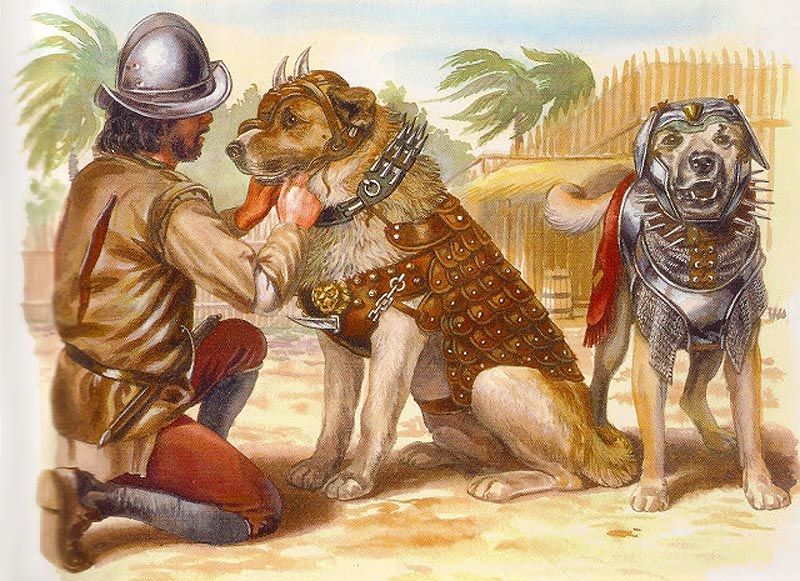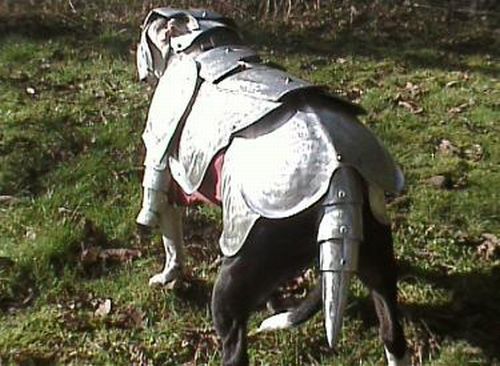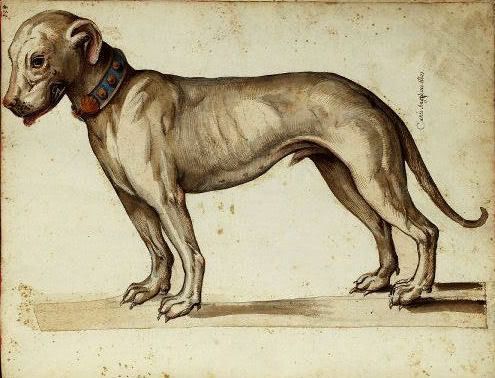When we think back on medieval times, we’re often reminded of plague, gruesome warfare, a shit load of incest, and the soft, soothing tones of Sean Bean’s voice. Today, we’re going to look into an often overlooked aspect of medieval life: the dogs. Unlike the cute variety that are now the staple of mind-numbing generic viral videos, these dogs were not pets but were often trained to penetrate armor and tear your throat out and seemingly even play musical instruments for lust-filled fair maidens, forming a chad style canine that makes modern dogs look frankly pathetic.
Many modern dogs we call pets today, such as greyhounds, spaniels, and mastiffs, can trace their origins back to the days of medieval kings. Greyhounds, in particular, held a high level of status back in the day and were often the gift of choice for medieval royalty. One Greyhound was even turned into a saint following its unjust death; however, the killjoys at the Catholic Church put a stop to this and destroyed its grave. Now, greyhounds chase a fake rabbit for fat middle-aged men to place meager bets on, how the mighty have fallen.
In an era of constant mistrust, untreatable syphilis, and backstabbing wankers (quite literally), the loyalty of dogs meant a lot to the medieval population. We can see this in evidence dating back to the 14th century, in a piece of personal writing by a French hunter with the majestic and rather camp name of Cume de Guye:
”I speak to my hounds as I would to a man… and they understand me and do as I wish better than any man of my household, but I do not think that any other man can make them do as I do.”
Like today, intelligent dogs were held in very high regard, and stories of the canine intelligence and loyalty certainly brightened the days of those living what must have been a relatively shitty and short life. When a dog refused to leave the graveside of its recently deceased owner, the Duke of Berry who went by the name John the Magnificent (he was fucking French, what do you expect?), personally went to see this for himself and even-handed over a ton of money for locals to make sure the dog is well fed for life. It seems that having a mid-life crisis was a thing back then too.
Toy dogs, however, provoked great joy or fierce anger, depending on how much of a cunt you were back then. Toy dogs were favored by bored women and seemingly despised by men leading to one furious male critic with a micropenis in the 1500s to declare: ‘toy dogs exist to satisfy wanton women’s willes’, I’ll admit I read that wrong at first and had to scrap my next promising article on 16th-century shemales. He went on to condemn them as ‘instruments of follie to play and dallie with, in trifling away the treasure of time, to withdraw their minds from more commendable exercises, a silly poor shift to shun their irksome idleness.’ Jesus, imagine if he saw what a rampant rabbit can do.
Medieval sources show us that most dogs in that era had to earn their keep through filling the role of guarding homes, castles, or livestock as well as hunting for food. However, when it came to war, a constant feature of medieval life usually started thanks to relentless French drama and bullshit, dogs filled a far more violent role.
Since dogs have been domesticated, they’ve filled a useful role in conventional warfare. As the glorious leader Donald Trump recently backed up during his speech following the death of Abu Bakr al-Baghdadi when he was tracked down by the best of the best of the US military machine before being cornered by a German Shepherd attack dog which proceeded to aggressively hump his dying body, or something like that, it was very dark in that tunnel. But the dog was of German Shepherd, so I believe there is some truth in that as I’ve been to Berlin. Anyway, the point is that dogs are a seriously good weapon to have at your side.
Some of the first recorded use of dogs in battle was by the good old Turks, a nation we all love! In what was the Kingdom of Lydia in modern-day Turkey where they were utilized to tear cavalry troops from their horses. As we moved into the medieval age, dogs’ roles in battle became more varied. In the bowels of the Weird World Wire headquarters, we painstakingly sat down and stared at medieval drawing for weeks to understand what makes dogs tick.
After two nervous breakdowns, what was left of our team finally figured out that most iconography that war dogs show them tearing into someone’s shoulder or ripping their face-off. So the dogs back then are trained to be aware of armor and look for the weak spots before going in for the kill. In another, we made the groundbreaking discovery that dogs back then could also play the bagpipes, or maybe that was just how Scottish people looked like back then. #OnlyInScotland.
In my personal opinion, which means absolutely nothing, the best medieval war dog breed is the Alaunt Gentil. Boasting a lethal bite and extreme levels of aggression, they don’t exist anymore, which is a good thing for insecure Pitbulls fearful of other competitors eyeing up docile small children to eat. The only way I could describe what Alaunt Gentil must have been like is a Pitbull on crystal meth and steroids that just came out of a degrading 20-year marriage and crushing divorce, armoured and backed up by a stinky man with a crossbow and life expectancy of 23.
I also believe that one thing which makes a war dog so threatening is that despite what carnage it unleashes on the battlefield, it actually can’t be taken to trial for war crimes. This is a fun fact that not a lot of many people know, and is evident in the fact that the dogs of Amon Goeth named Rolf and Ralf, got away with their heinous crimes during the Second World War.
Some people around the world with too much time on their hands, which I can relate too as I write this article, are trying to recreate these Alaunt Gentil dogs of war. Alongside the cloning of Mammoths, I think we may have a year in the pipeline that makes 2020 look awesome.





